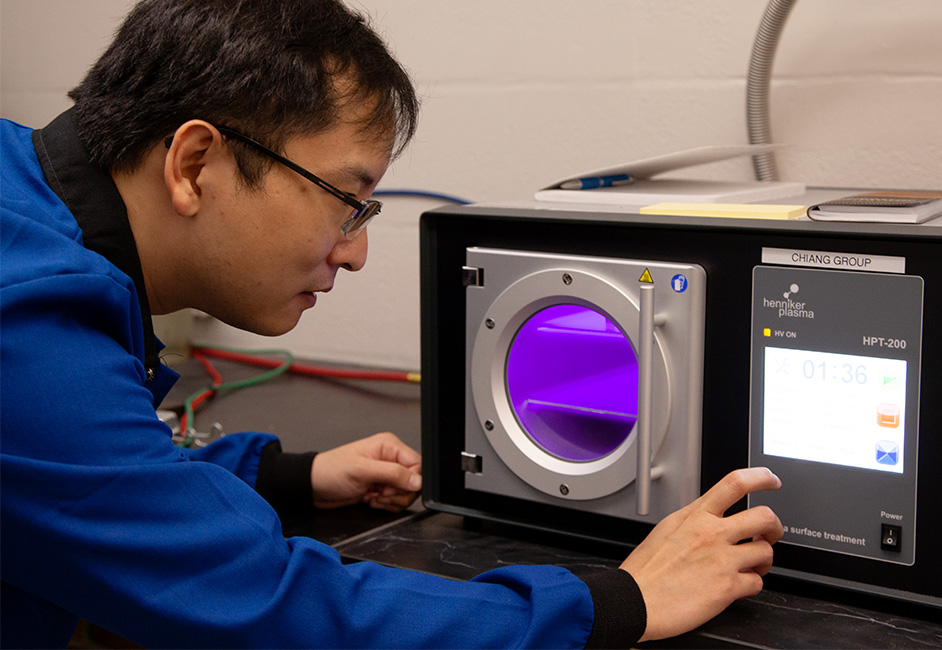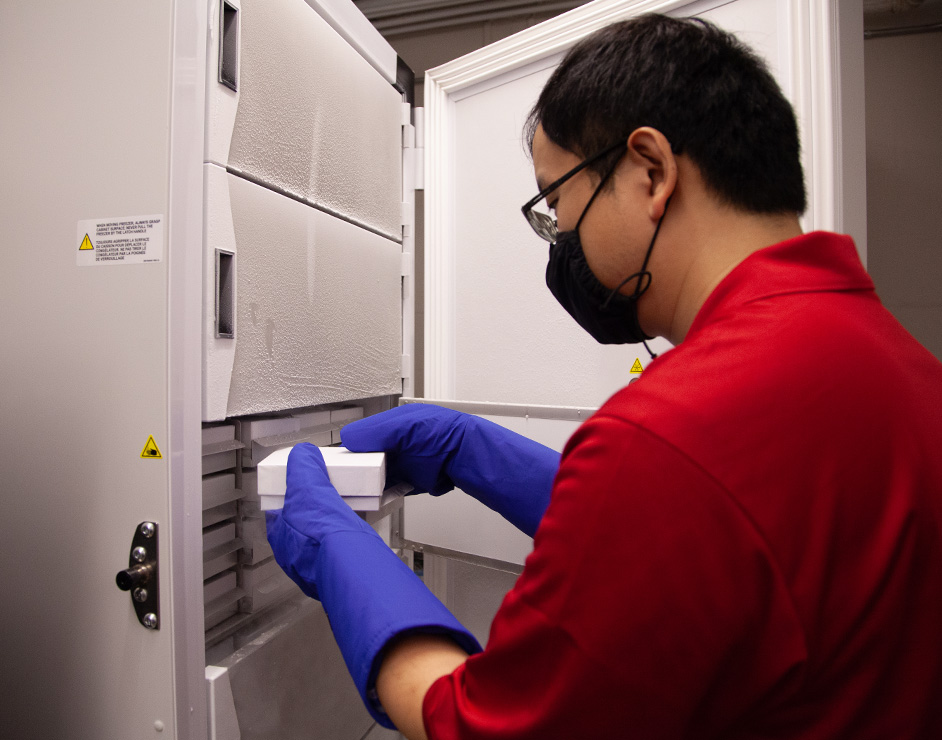Naihao Chiang To Achieve Results with Possible Applications in Drug Delivery and Gene Therapies
Leaps and bounds in health care have occurred greatly due in part to the delivery of proteins and molecules to the human cell. This function has spurred thousands of therapies.

Traditionally, scientists use physical or biochemical methods for delivery. One example of a physical method is electroporation, which essentially uses electricity to create a hole in the cell to deliver molecules. Biochemical methods are more popularly understood, because of their similarity to how the COVID-19 vaccine works. Important materials go into the cell as cargo on another molecule or on a virus.
Naihao Chiang, the Drs. Yao and Song endowed assistant professor of chemistry, thinks outside the box. He proposes a new plasmon-induced intracellular delivery method.
His technology, he said, “is non-toxic and has no off-target effects. It is universal to many different molecule cargos into the cell, like proteins, RNA and DNA. It is also universal to all cell types.”
Chiang’s intracellular delivery uses a highly localized and intensified electromagnetic field to bring materials into the cell using gold, plasmonic non-contact nanopipettes he and his lab will make.
Non-Contact through Nanometers
The nanopipettes will be mounted on a home-built scanning ion conductance microscope coupled to an inverted optical microscope. The feedback loop from the ion conductance microscope enables nanometer scale accuracy, that is, accuracy at one billionth of meter.

When a nanopipette is placed close to a cell, a low power laser will be used to excite electrons at the pipette’s tip. A localized and amplified electromagnetic field from oscillation of electrons will create a nanometer-sized pore along the cell’s outer membrane without physically penetrating the cells.
His lab’s aim is also to increase the throughput of their delivery mechanism through microfluidics, a technology that manipulates small volumes of fluids.
“The strength of this research is its broad interdisciplinary scope,” Chiang said. “It bridges chemistry and physics with stem cell biology and regenerative medicine.”
His work could drive further innovation in fundamental research and translational medicine that combines basic science, clinical research and industry.
Medicine and Therapies
“This can be a really good drug screening platform, because the pipette only needs a tiny drop of a certain material. Drugs can be expensive to make in a large quantity. We can use this method in in vitro studies before advancing to the next stage of clinical trials, so it can be a first screening of those drugs or even vaccines.”
His technology could also lead to improvements in the performance of stem cell-based gene therapies that have made breakthroughs in the treatment of cancer, anemia and cystic fibrosis.
His work is funded by the National Institute of Biomedical Imaging and Bioengineering. The institute awarded him $741,940 for three years.
- Rebeca Trejo, College of Natural Sciences and Mathematics